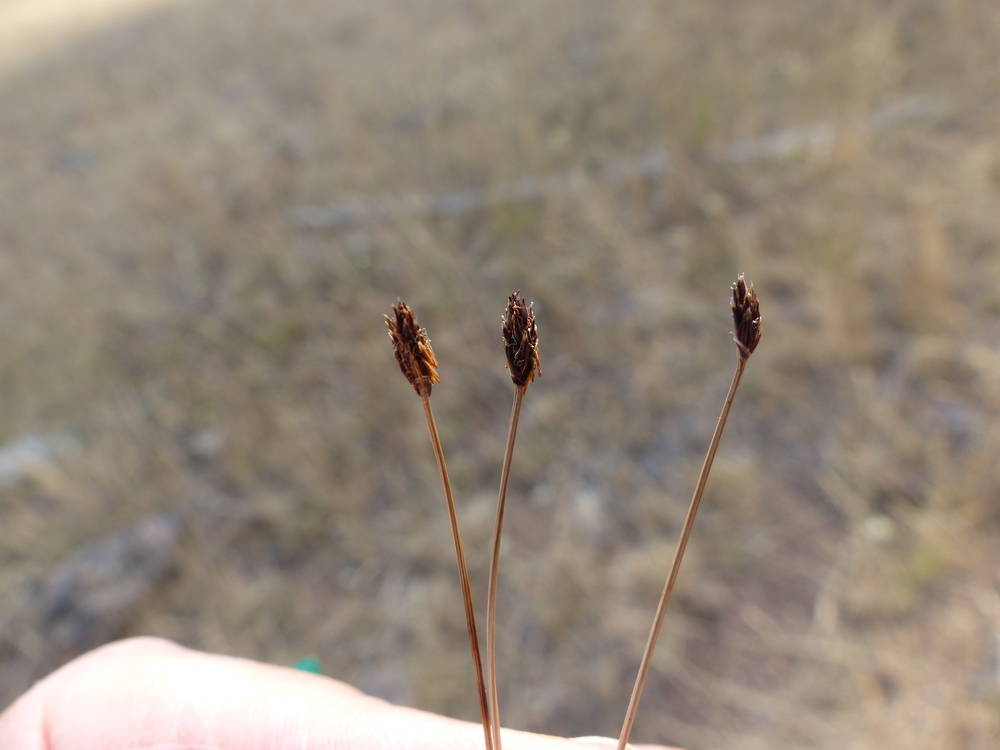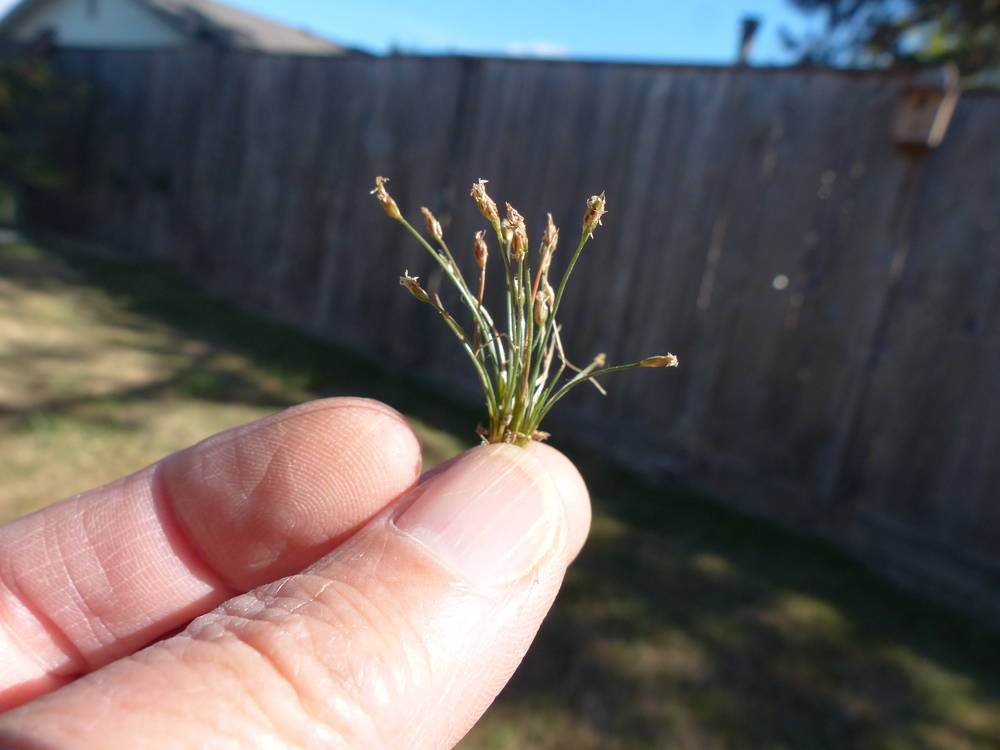Eleocharis bolanderi
Eleocharis bella
Bolander's spikerush
delicate spikerush, pretty spikerush
subterete, 10–30 cm × 0.3–0.5 mm.
often ascending or spreading, 4-angled or terete 1–7 cm × 0.2–0.3 mm.
ovoid, 3–8 × 2–3 mm;
proximal scale clasping; entire, subproximal scale with flower; floral scales 8–30, 4–5 per mm of rachilla, 2–3 × 1.5 mm;
apex entire; acute, often keeled in distal part of spike.
ovoid, 1.5–4 × 0.8–2 mm; floral scales 4–15, 8 per mm of rachilla, 1–1.5 × 0.5–0.7 mm;
midrib obscure to somewhat keeled;
apex narrowly acute to acuminate, slightly recurved.
perianth bristles 3–6, often unequal; from rudimentary to 50% of achene length;
anthers 0.9–1.4 mm;
stigmas 3.
perianth bristles absent;
anthers 0.3–0.5 mm;
stigmas 3.
slightly to greatly compressed-trigonous, rarely thickly lenticular, 0.9–1.2 × 0.65–0.8 mm.
with about 6–10 rather prominent angles and longitudinal ridges, broadly ovoid; less than 2 times longer than wide; (0.55)0.65–0.75 × 0.3–0.4 mm; fine horizontal ridges distinct, 20–30.
persistent, not splitting;
apex obtuse, rarely hardened, lacking a tooth.
often splitting;
apex acute.
flat to shallowly pyramidal; lower than wide, 0.1–0.3 × 0.4–0.65 mm.
mostly appressed; pyramidal, often depressed, 0.1–0.2 × 0.1–0.25 mm.
Eleocharis bolanderi
Eleocharis bella
Shallow, rocky, ephemeral streams. 1100–2100 m. BR, BW, Owy. CA, NV, ID; east to CO. Native.
Eleocharis bolanderi is easily recognized in summer when it forms masses of dry, brown, dormant and apparently dead culms in dry stream beds. It is easily pulled up to expose its cespitose habit. The virtually flat tubercles are particularly distinctive.
Exposed lake margins and streamsides, wet meadows. 0–2100 m. BR, BW, ECas, Owy, Sisk, WV. CA, ID, NV, WA; northeast to MT, southeast to NM, south to Mexico. Native.
Eleocharis bella has sometimes been considered a variety of E. acicularis, which is a rhizomatous perennial with larger floral scales, anthers, and achenes. Hybrids between the two are unknown.
Barbara Wilson, Richard Brainerd, Nick Otting
Barbara Wilson, Richard Brainerd, Nick Otting
- Local floras:
CA,
OR,
WA
- Local Web sites:
CalFlora,
CalPhotos,
Flora NW,
PNW Herbaria
WildflowerSearch
iNaturalist (observations)
USDA Plants Database
- LBJ Wildflower Center
- SEINet
- Plants of the World Online
- Encyclopedia of Life
- Wikipedia
- Google Image Search
- Local floras:
CA,
OR,
WA
- Local Web sites:
CalFlora,
CalPhotos,
Flora NW,
PNW Herbaria
WildflowerSearch
iNaturalist (observations)
USDA Plants Database
- LBJ Wildflower Center
- SEINet
- Plants of the World Online
- Encyclopedia of Life
- Wikipedia
- Google Image Search





